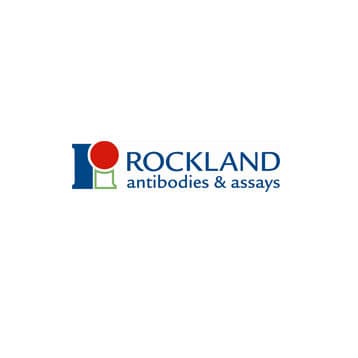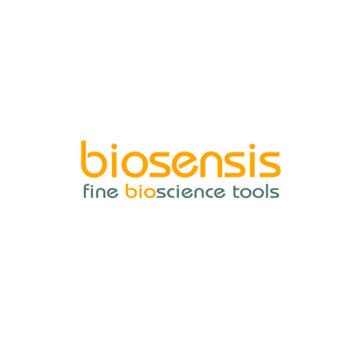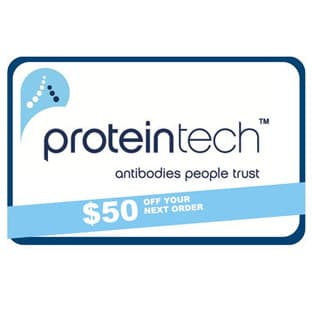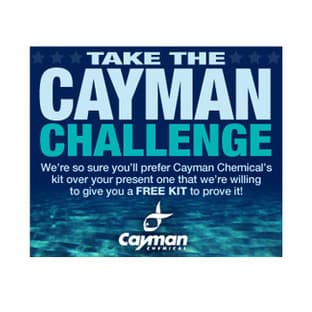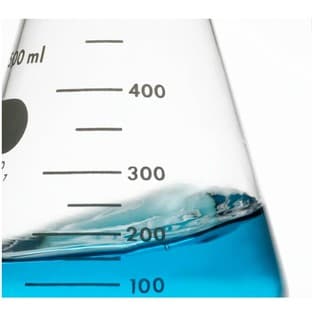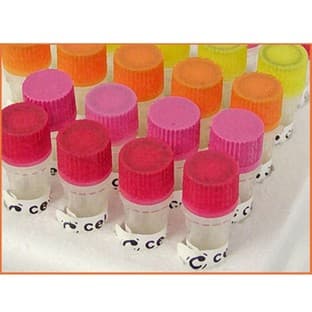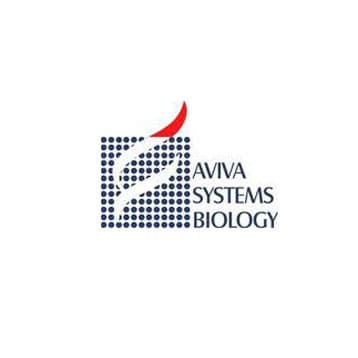
Supplier:
Aviva Systems Biology IncorporatedLUTEINIZING hormone (Lh) ENZYME IMMUNOASSAY TEST KIT (96 Wells)
The basal secretion of LH in samples is episodic and has the primary function of stimulating the interstitial cells (Leydig cells) to produce testosterone. The variation in LH concentrations in samples is subject to the complex ovulatory cycle of healthy menstruating samples, and depends upon a sequence of hormonal events along the gonado-hypothalamic-pituitary axis. The decrease in progesterone and estradiol levels from the preceding ovulation initiates each menstrual cycle.9,10 As a result of the decrease in hormone levels, the hypothalamus increases the secretion of gonadotropin-releasing factors (GnRF), which in turn stimulates the pituitary to increase FSH production and secretion.4 The rising FSH levels stimulate several follicles during the follicular phase; one of these will mature to contain the egg. As the follicle develops, estradiol is secreted slowly at first, but by day 12 or 13 of a normal cycle, increases rapidly. LH is released as a result of this rapid estradiol rise because of direct stimulation of the pituitary and increasing GnRF and FSH levels. These events constitute the preovulatory phase.11
Ovulation occurs approximately 12 to 18 hours after the LH reaches a maximum level. After the egg is released, the corpus luteum is formed which secretes progesterone and estrogen, the feedback regulators of LH.3,10 The luteal phase rapidly follows this ovulatory phase, and is characterized by high progesterone levels, a second estradiol increase, and low LH and FSH levels.12 Low LH and FSH levels are the result of the negative feedback effects of estradiol and progesterone on the hypothalamic-pituitary axis.
After conception, the developing embryo produces hCG, which causes the corpus luteum to continue producing progesterone and estradiol. The corpus luteum regresses if pregnancy does not occur, and the corresponding drop in progesterone and estradiol levels results in menstruation. The hypothalamus initiates the menstrual cycle again as a result of these low hormone levels.12
Samples suffering from hypogonadism show increased concentrations of serum LH. A decrease in steroid hormone production in samples is a result of immature ovaries, primary ovarian failure, polycystic ovary disease, or menopause. LH secretion is not regulated in these cases.10,13 A similar loss of regulatory hormones occurs in samples when the testes develop abnormally or anorchia exists. High concentrations of LH may also be found in primary testicular failure and Klinefelter syndrome, although LH levels will not necessarily be elevated if the secretion of androgens continues. Increased concentrations of LH are also present during renal failure, cirrhosis, hyperthyroidism, and severe starvation.10,14
A lack of secretion by the anterior pituitary may cause lower LH levels. As may be expected, low levels may result in infertility in samples. Low levels of LH may also be due to the decreased secretion of GnRH by the hypothalamus. Low LH values may therefore indicate some dysfunction of the pituitary or hypothalamus, but the actual source of the problem must be confirmed by other tests.10
In the testing of hypothalamic, pituitary, or gonadal dysfunction, assays of LH concentration are routinely performed in conjunction with FSH assays as their roles are closely interrelated. Furthermore, the hormone levels are used to determine menopause, pinpoint ovulation, and monitor endocrine therapy.
Enzyme Immunoassay for the Quantitative Determination of Luteinizing Hormone (LH) in Sample Serum
Principle of the assay: The Aviva LH ELISA is based on the principle of a solid phase enzyme-linked immunosorbent assay15,16. The assay system utilizes a mouse monoclonal anti-?-LH antibody for solid phase (microtiter wells) immobilization, and a mouse monoclonal anti-?-LH antibody in the antibody-enzyme (horseradish peroxidase) conjugate solution. The test sample is allowed to react simultaneously with the antibodies, resulting in the LH molecules being sandwiched between the solid phase and enzyme-linked antibodies. After a 45 minute incubation at room temperature, the wells are washed with water to remove unbound labeled antibodies. A solution of Tetramethylbenzidine (TMB) is added and incubated for 20 minutes, resulting in the development of a blue color. The color development is stopped with the addition of 1N HCl, and the resulting yellow color is measured spectrophotometrically at 450 For Research Purposes Only Page 2 nm. The concentration of LH is directly proportional to the color intensity of the test sample.
Prices direct from Aviva Systems Biology Incorporated
Quick response times
Exclusive Absave savings/discounts
Applications
ELISA
Reactivities
Hum
Applications
ELISA
Reactivities
Hum
Applications
ELISA, WB
Hosts
Mouse
Applications
IHC
Hosts
Mouse
Latest promotions
Buy any polyclonal or monoclonal antibody from our extensive range of pre-made antibodies and for a limited time only receive a $50 discount!(T&C apply:...
New brilliant antibodies, and new lower prices!For flow cytometry reagents in general, \"bright is better.\" The violet-excitable BD Horizon™ BV421 and...
10% Discount on 2 Rabbit Polyclonal Antibody Service. With over 20 years experience, SDIX has developed into the premier US custom antibody producer,...
For the past decade scientists have extensively used ATS secondary toxin conjugates to make their own targeted toxins for in vitro use.The ability to combine...
We're so sure that you'll prefer Cayman Assay kits over your present brand that we're willing to give you a free assay kit to prove it!
Did your supplier increase the price of Fetal Bovine Serum? Did they substitute the US Origin with USDA? Well say no more! Innovative Research is still...
Bulk Cytokines with Custom Vialing.20 - 50% off cytokines, growth factors, chemokines and more...For a limited time Cell Sciences is offering substantial...
Are you planning to have a customised antibody made for your research?Since 2000, Everest has been producing a catalog containing thousands of affinity...
Top suppliers
Agrisera AB
11 products
Biotrend
Biosensis
969 products
ABBIOTEC
3011 products
SDIX
1 products
Spring Bioscience
2291 products
Cell Signaling Technology
4976 products
Rockland Immunochemicals, Inc.
7592 products
Boster Immunoleader
1533 products
OriGene Technologies Inc.
5281 products
Maine Biotechnology Services
227 products
BD (Becton, Dickinson and Company)
1 products
ABNOVA CORPORATION
Randox Life Sciences
1502 products

